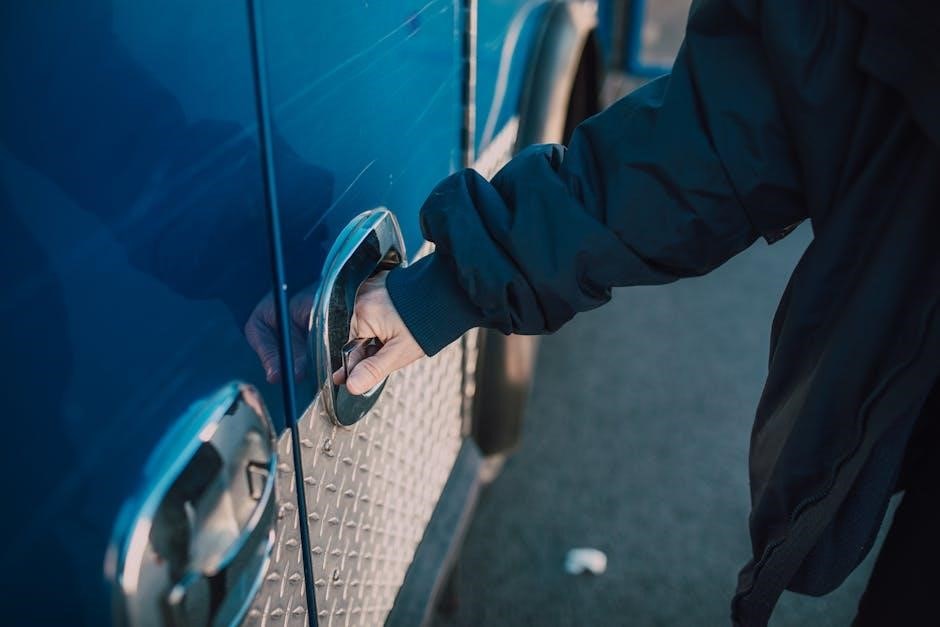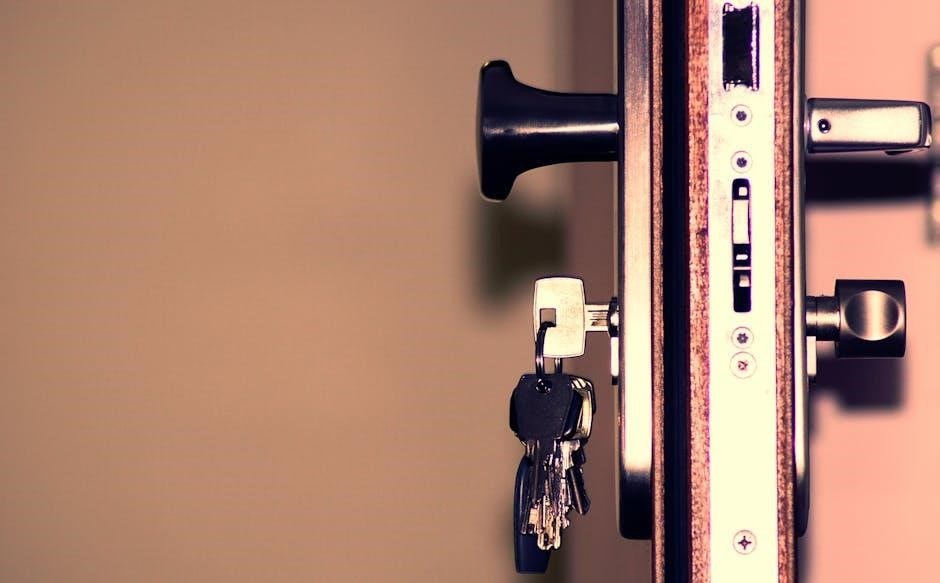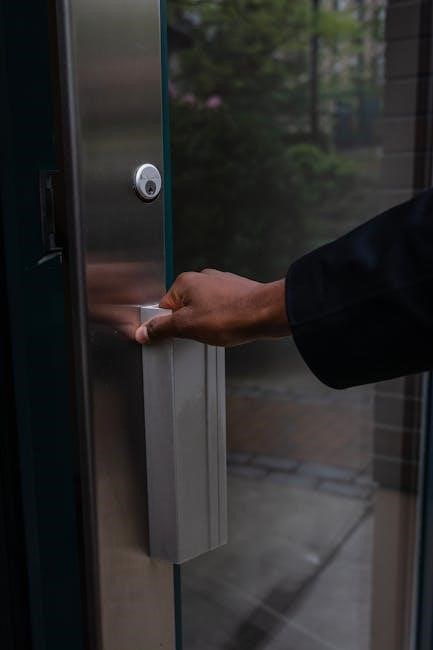Manually locking your garage door enhances security and ensures protection against unauthorized access. Engage the manual lock mechanism, use a padlock on the track, or install L-shaped locking bars for added safety. Always test the lock to ensure it’s secure and consider drilling holes for extra protection. Regular maintenance and keeping backup keys are essential for reliable manual operation.
Manual garage door locking is a practical and essential skill for homeowners seeking to enhance garage security and maintain control over access. Unlike automatic systems, manual locking provides a straightforward method to secure your garage door, especially during power outages or when additional security is needed. This approach involves using the door’s built-in manual release mechanism or adding extra locking devices like padlocks or L-shaped bars. Understanding how to lock your garage door manually ensures peace of mind and protects your belongings from potential intruders. It’s also a useful backup option when automated systems fail. By engaging the manual lock or using supplementary security measures, you can ensure your garage remains secure in any situation. This section will guide you through the basics of manual locking, preparing you for the detailed steps ahead.
Tools and Materials Needed for Manual Locking
To manually lock your garage door, you’ll need a few essential tools and materials. Start with a sturdy padlock, which can be used to secure the track or T-handle. L-shaped locking bars are another effective option, sliding into the tracks to prevent movement. For added security, consider drilling holes in the track and using screws or bolts to fasten the door in place. An emergency release cord is also handy for quick disengagement when needed. Additionally, a pair of pliers or a screwdriver may be required to tighten or adjust locking mechanisms. For extra protection, industrial steel cables can be used to reinforce the door’s stability. Finally, ensure you have a backup key for any locks you install, as losing access can lead to inconvenience. These tools and materials will help you achieve a secure manual lock, providing peace of mind and enhanced garage security.
Basic Steps to Lock a Garage Door Manually

Manually locking your garage door involves a straightforward process to ensure security. First, disconnect the automatic opener by pulling down the emergency release cord, which disengages the motor from the door. Next, lower the door completely and ensure it is fully closed. Locate the manual lock mechanism, typically found on the door or track, and engage it to secure the door in place. For added safety, use a padlock by threading it through a hole in the track or T-handle. If your door has L-shaped locking bars, slide them into the tracks to prevent movement. Finally, test the lock by attempting to open the door to confirm it is securely fastened. These basic steps provide a reliable way to manually lock your garage door, offering peace of mind and enhanced security.
Using the Emergency Release Cord
The emergency release cord is a essential feature for manually locking your garage door, especially during power outages or mechanical failures. This cord, typically red and hanging from the opener, allows you to disconnect the motor from the door. To use it, pull the cord downward, which engages manual mode and prevents the door from being opened electronically. Once disconnected, carefully lower the door to the ground and ensure it is fully closed. This step is crucial for securing the door manually. After the door is closed, you can proceed to engage the manual lock mechanism or use additional security measures like padlocks. Always test the door to confirm it cannot be opened from the outside. Using the emergency release cord provides a reliable way to take control of your garage door manually, ensuring it remains secure until the automatic system is restored.
Engaging the Manual Lock Mechanism
Engaging the manual lock mechanism is a straightforward process that ensures your garage door remains secure when not in use. Locate the locking handle, typically found on the track or near the door’s center. To engage the lock, insert the key or T-handle into the keyhole and turn it clockwise until you feel resistance. This action locks the door in place, preventing it from being opened manually or electronically. For added security, ensure the door is fully closed before engaging the mechanism, as the lock may not function properly if the door is partially open. Once locked, you should hear a distinct “click” or “snap,” indicating the mechanism is secure. Test the door by gently pulling upward to confirm it cannot be opened. This method is particularly useful during power outages or when you prefer not to rely on the automatic opener. Always keep the key in a safe location to avoid unauthorized access.
Securing the Door with a Padlock

Securing your garage door with a padlock is a simple yet effective method to enhance its manual locking system. To do this, locate a suitable spot on the garage door track, typically just above one of the wheels on the inside of the track. If the track does not already have pre-drilled holes, drill a small hole in the track at a height that aligns with the padlock’s shackle. Insert the shackle of a heavy-duty padlock through the hole and close it securely. This prevents the door from being lifted or moved along the track. For added security, ensure the padlock is of high quality and tamper-resistant. When the padlock is engaged, the garage door cannot be opened manually or electronically, providing an additional layer of protection against unauthorized access. Always store the padlock key in a safe and accessible location to avoid being locked out. This method is particularly useful for garage doors without built-in manual locking mechanisms.
Installing L-Shaped Locking Bars
Installing L-shaped locking bars is an effective way to manually secure your garage door. These bars are typically located on the edges of the garage door and slide sideways into the tracks. To engage them, simply slide the bar into the track until it clicks or locks into place. This prevents the door from moving along the track, ensuring it remains closed and secure. L-shaped locking bars are easy to install and provide an additional layer of security, especially for garage doors without built-in locking mechanisms. They are also a cost-effective solution compared to more complex locking systems. When installed correctly, these bars can withstand significant force, making it difficult for intruders to pry the door open. For optimal security, ensure the bars are made of durable materials and fit snugly into the tracks. Regularly inspect the locking bars to ensure they remain in good condition and function properly. This method is ideal for enhancing garage door security in a simple and efficient manner.

Drilling Holes for Additional Security
Drilling holes for additional security is a straightforward method to enhance manual locking of your garage door. Locate the track above the wheels and drill a hole just above one of them. This allows you to insert a padlock, securing the door in place. Ensure the holes align properly to prevent misalignment. Use a sturdy drill bit and take safety precautions, such as disconnecting the garage door opener before drilling. This method provides an extra layer of protection against unauthorized access. The padlock acts as a visible deterrent and ensures the door cannot be opened easily. For added security, drill multiple holes at intervals along the track. This technique is particularly useful for older garage doors or those without built-in locking mechanisms. Always use a high-quality padlock and test the setup to ensure it holds securely. This simple modification significantly improves garage door security, offering peace of mind for homeowners.
Important Safety Considerations
When manually locking your garage door, it’s crucial to prioritize safety to avoid accidents or lockouts. Always disconnect the automatic opener before engaging manual locks to prevent unintended door movement. Ensure the door is fully closed and secure before applying any locking mechanism. Be cautious when handling tools and avoid over-tightening locks, which could damage the door or its components. Keep spare keys easily accessible in case of emergencies, and never leave the garage door partially open, as it can pose a safety hazard. Additionally, regularly inspect the locking mechanisms and tracks for wear and tear to maintain effective security. If unsure about any method, consult a professional to ensure proper installation and operation. By following these safety guidelines, you can manually lock your garage door with confidence and protect your property effectively.

Tips for Enhanced Garage Security
To enhance your garage security when locking manually, consider combining multiple methods for maximum protection. Install a high-quality padlock on the track or use L-shaped locking bars for added strength. Reinforce the door’s vulnerability by drilling holes in the track and securing it with sturdy rods or chains. Covering windows prevents potential intruders from scouting your garage contents. Regularly inspect and maintain all locking mechanisms to ensure they function properly. Keep spare keys in a safe, accessible location to avoid lockouts. Additionally, consider upgrading to a smart lock or electronic keypad for modern security features. Always close the door fully and avoid leaving it partially open, even when at home. Educate family members on proper locking procedures to maintain consistent security. By implementing these tips, you can significantly improve your garage’s safety and deter potential intruders effectively.
Common Mistakes to Avoid
When manually locking your garage door, there are several common mistakes to avoid for optimal security. One of the most frequent errors is not fully engaging the manual lock mechanism, leaving the door vulnerable. Many homeowners also overlook the importance of using high-quality locks or padlocks, which can easily be bypassed by intruders. Another mistake is failing to secure the emergency release cord properly, allowing unauthorized access. Some individuals forget to close the garage door completely before locking, which defeats the purpose of manual locking. Additionally, relying solely on one locking method, such as L-shaped bars, without reinforcing other potential entry points, can leave your garage at risk. Neglecting regular maintenance of locking mechanisms is another oversight, as worn-out parts can compromise security. Finally, some people make the error of not testing the lock after installation or use, which can lead to ineffective security measures. Avoiding these mistakes ensures a more secure and reliable manual locking system for your garage door.
